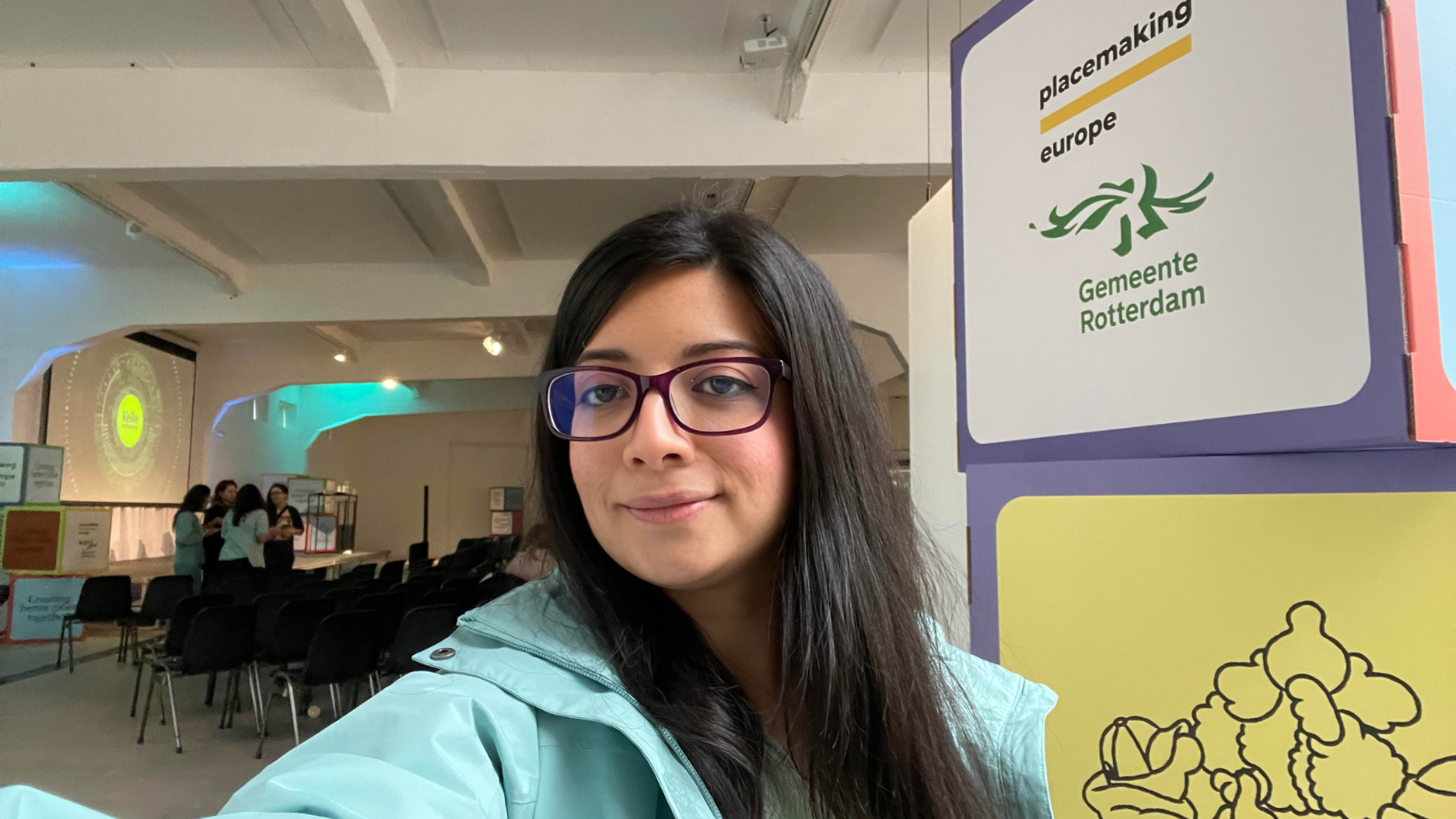
What makes a good place❔
“What makes a Good Place?”. Before attending the conference, I had never stopped to ask myself this question. It wasn’t until Kristin Zupancic, host of the Good Place bench, asked me during an interview that I realised, "Oh, this is a brilliant question." For me, a good place is somewhere warm and cosy. It also means having good food and that place being easily accessible.
Placemaking Europe 2024 brought together professionals from all over the globe in Rotterdam. The agenda was filled with workshops, outdoor activities, and presentations—I wanted to be everywhere! Of course, that wasn’t possible, so I focused on out-of-the-box sessions that could inspire WeGenerate.
One presentation by the City of Bradford showed how to create a community park from scratch, and how to convince residents of its benefits. It was surprising to learn that the city held separate workshops for teenage girls, as they often don’t use parks, which are commonly perceived as spaces for boys. The creative sessions with the girls introduced ideas like swings, benches, hammocks, and a pond—making the park more inviting for everyone.
I also learned that in Thessaloniki there is a large number of vacant spaces, many of which are due to homeowners renting out their properties on platforms like Airbnb. Even basement areas are left empty.
The OASIS schoolyards presentation was another highlight. In Manila, children prefer spending time at school playgrounds rather than at home, as their houses are often too hot. This made me reflect on how, in the Nordic countries, school playgrounds remain open even after school hours, while in many other places, they close as soon as the day ends. The OASIS initiative aims to change this, while also making playgrounds greener.
In Dordrecht, the city undertook large-scale changes to an area adjacent to a highway. According to the residents of the vicinity, the highway was a big source of pollution and made the area unsafe for school children (there are three schools in the area). It took the city 20 years, but eventually the highway was closed off. The city dug up the road to reveal a canal beneath and added green space around it. The area is now actively monitored by residents for water and air quality, and the city tracks the heat island effect by comparing temperatures in various locations, such as playgrounds, parks, and rooftops.
I also attended a session that showcased award-winning case studies from Canada. One of the highlights was RendezViews, an outdoor patio created from an unused parking lot, now used for events like Eurocup matches and festivals.
Finally, I participated in a biodiversity workshop where I imagined myself as a lichen, experiencing our environment through its perspective. Lichens, as many of us know, are a resilient type of fungi that absorb pollutants from the air, making them indicators of air quality. They grow very slowly (just 1mm per year) and thrive in quiet, undisturbed places, like rooftops or forests.
I highly recommend Placemaking Europe to anyone looking to make a change in their area or city. It’s not only a place to find inspiration but also a platform to share your own story. Every effort, big or small, counts—and has the potential to grow into something unexpected.
Zarrin Fatima, Research Scientist at VTT (Finland)